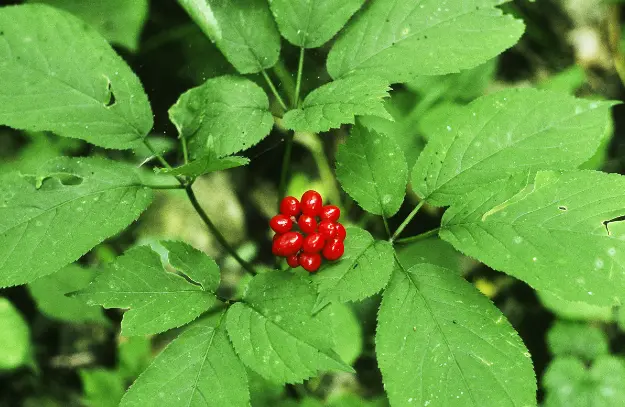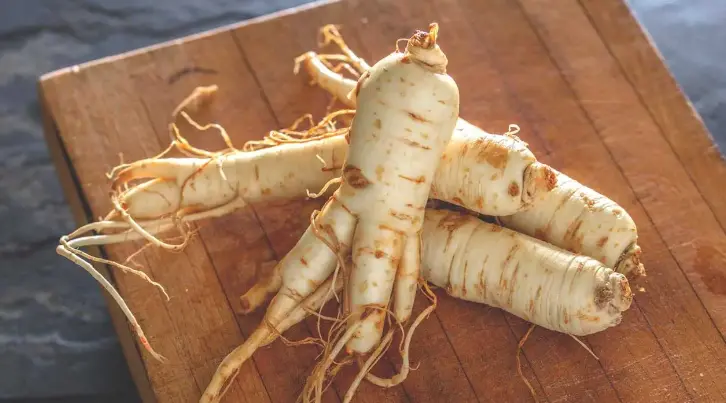
Renix Care is committed to provide high-quality Unani Medicine & Natural products at competitive prices backed by excellent customer service so you can trust us with your purchase decisions every time!
Created : September 5, 2024

Ginseng is a medicinal herb that has been used for centuries in traditional medicine, particularly in Asia and North America. It belongs to the Panax genus, with the two most common types being Asian ginseng (Panax ginseng), also known as Korean ginseng, and American ginseng (Panax quinquefolius).
Ginseng is highly valued for its adaptogenic properties, meaning it helps the body adapt to stress, improve energy levels, and promote overall well-being.
The herb is primarily known for its ability to enhance physical and mental performance, support immune function, and boost stamina. The key active compounds in ginseng are called ginsenosides, which are believed to contribute to its wide range of health benefits.
The plant grows in cool, shady forests, and its roots, which resemble a human figure, are the part most commonly used in herbal remedies. Ginseng is typically consumed in the form of teas, extracts, powders, or capsules for its restorative and rejuvenating effects.
Ginseng is a remarkable herb celebrated for centuries across various cultures for its impressive health benefits. Recognized for its adaptogenic properties, ginseng helps the body manage stress, improve energy levels, and enhance overall well-being. Traditionally used in herbal medicine, it is prized for its ability to restore balance within the body and support immune health.
This introduction explores the different types of ginseng, including Asian (Korean) and American varieties, each offering unique therapeutic effects. We will also look into its health benefits, from boosting cognitive function to supporting vitality. Additionally, you’ll learn how to identify ginseng in the wild, with tips on recognizing its distinct taproot, compound leaves, and characteristic flowering structure.
Identifying the ginseng plant can be a rewarding and fascinating experience for herbal enthusiasts and foragers. Ginseng generally grows in shaded, forested environments, particularly in areas with rich, moist soil. The plant is most easily recognized by its compound leaves, which are arranged in a whorled pattern around the stem. Each leaf typically has three to five serrated leaflets, forming a three-pronged or five-pronged structure.
As ginseng matures, it produces small clusters of red, round berries at the center of the plant, emerging from a flat-topped cluster of flowers called an umbel. These berries are one of the plant's distinctive features. However, the most valuable and sought-after part of the ginseng plant is its root. The root is thick, fleshy, and often resembles a human figure, which has led to its widespread use in traditional medicine.
When identifying ginseng in the wild, it's important to be mindful of its slow growth, as it can take 5–7 years to mature. Ethical foraging practices, such as only harvesting mature plants and leaving some behind, help preserve this valuable herb for future generations.

There are several varieties of ginseng, each with unique characteristics and benefits. Understanding these types can help you choose the right one for your needs.
Asian ginseng, scientifically known as Panax ginseng, is a highly valued herb native to Korea and China. Renowned for its stimulating properties, it is widely used to enhance energy levels and improve cognitive function.

Asian ginseng is typically consumed in various forms, including teas, extracts, capsules, and powders, to harness its revitalizing benefits.
American ginseng (Panax quinquefolius) is native to North America and is known for its calming effects. It is often used to reduce stress and promote relaxation.
This variety is primarily found in China and is known for its potential to improve blood circulation and support cardiovascular health. Panax notoginseng is a plant that grows in the mountains in Southwest China. Its root is sometimes used as medicine once it has grown for 3-5 years.
This lesser-known variety is native to Vietnam and is gaining popularity for its potential health benefits.
Mountain ginseng is typically found in high-altitude regions and is known for its unique flavor and medicinal properties.
This type of ginseng is native to China and is often used in traditional Chinese medicine for its health benefits.
Korean red ginseng is a popular form of Asian ginseng that has been steamed and dried, enhancing its medicinal properties.
Ginseng is renowned for its numerous health benefits, making
it a popular choice among herbal remedies. Ginseng, a popular herbal remedy, primarily comes in two varieties: Asian/Korean ginseng (Panax ginseng) and American ginseng (Panax quinquefolius). Each type is thought to offer different health benefits, with American ginseng being considered less stimulating in traditional Chinese medicine.
While some herbs are called "ginseng," like Siberian ginseng or eleuthero, they don't contain the key active ingredient, ginsenosides, which are responsible for many of ginseng's health benefits.
Here are some of ginseng’s potential benefits:
Immunity Boost: Research suggests that ginseng can help strengthen the immune system. Some studies point to American ginseng extract lowering the frequency and severity of colds in adults.
Blood Sugar Regulation: Ginseng has been shown in several studies to help lower blood sugar levels, making it beneficial for those managing diabetes.
Improved Focus: Early research indicates that ginseng may give a short-term boost to concentration and learning. When combined with ginkgo extract, it could potentially improve mental performance, but more studies are needed.
Reduced Inflammation: Ginseng may also have anti-inflammatory properties, offering relief for those with inflammatory diseases.
While more research is needed for many of these claims, ginseng remains a promising natural remedy in various wellness practices.
Many people use ginseng to enhance sexual health. Studies
suggest that ginseng may improve libido and sexual performance in both men and
women. Panax ginseng, commonly known as Korean ginseng, is an herb traditionally used for various health benefits. It's important not to mistake it for other types of ginseng.
Panax ginseng is native to Korea, China, and Siberia and is classified as an adaptogen—natural substances thought to help the body cope with stress. This plant contains several active compounds, the most notable being ginsenosides or panaxosides.
People consume Panax ginseng orally for conditions like memory improvement, cognitive function, Alzheimer’s disease, and depression. However, there is limited scientific evidence to fully support many of these uses.
It's essential to differentiate Panax ginseng from other plants often labeled as ginseng, such as American ginseng, Blue Cohosh, Canaigre, Codonopsis, Eleuthero, or Panax Notoginseng. These plants have distinct properties and effects.

For women, ginseng may help alleviate symptoms of menopause, improve mood, and boost energy levels.
If you're interested in cultivating ginseng, it's essential to understand the best practices for growing this valuable herb.
Kentucky is known for its rich soil and favorable climate for growing ginseng. Many local farmers cultivate American ginseng, contributing to the state's economy.
The Appalachian region is famous for its wild ginseng, which thrives in the forested areas. Harvesting ginseng in this region is a traditional practice that continues today.
Ohio also has a growing ginseng industry, with many farmers focusing on sustainable practices to cultivate this valuable herb.
In Buckeye, ginseng cultivation is becoming increasingly popular, with local growers exploring the benefits of this ancient plant.
Ginseng is available in various forms, making it easy to incorporate into your daily routine.
Ginseng tea is a popular way to enjoy the benefits of this herb. It can be made from dried ginseng roots and is often enjoyed for its soothing properties.
Ginseng supplements are widely available and can provide a convenient way to experience the health benefits of ginseng without the need for preparation.
Many people wonder if ginseng is effective. Research suggests that ginseng can provide various health benefits, but results may vary from person to person. It's essential to consult with a healthcare professional before starting any new supplement regimen.
Combining ginseng with honey creates a delicious and healthful blend. Honey can enhance the flavor of ginseng while also providing its own health benefits, such as soothing sore throats and boosting immunity.
Ginseng season typically occurs in the fall, making it the best time to harvest wild ginseng roots. Knowing the right time to harvest is crucial for sustainability and ensuring the plant can continue to thrive.
Ginseng is a powerful herb with a rich history and numerous health benefits. Whether you're interested in its various types, growing it yourself, or incorporating it into your diet through tea or supplements, ginseng offers something for everyone. Explore the world of ginseng and discover how this ancient plant can enhance your well-being.
Visit Our Unani Medicine Shop: Unani Shop | Diabetes Medicine | Unani Skin Care & Hair Care | Health & Wellness | Weight Gainer Supplement | Sexual Wellness
Comments